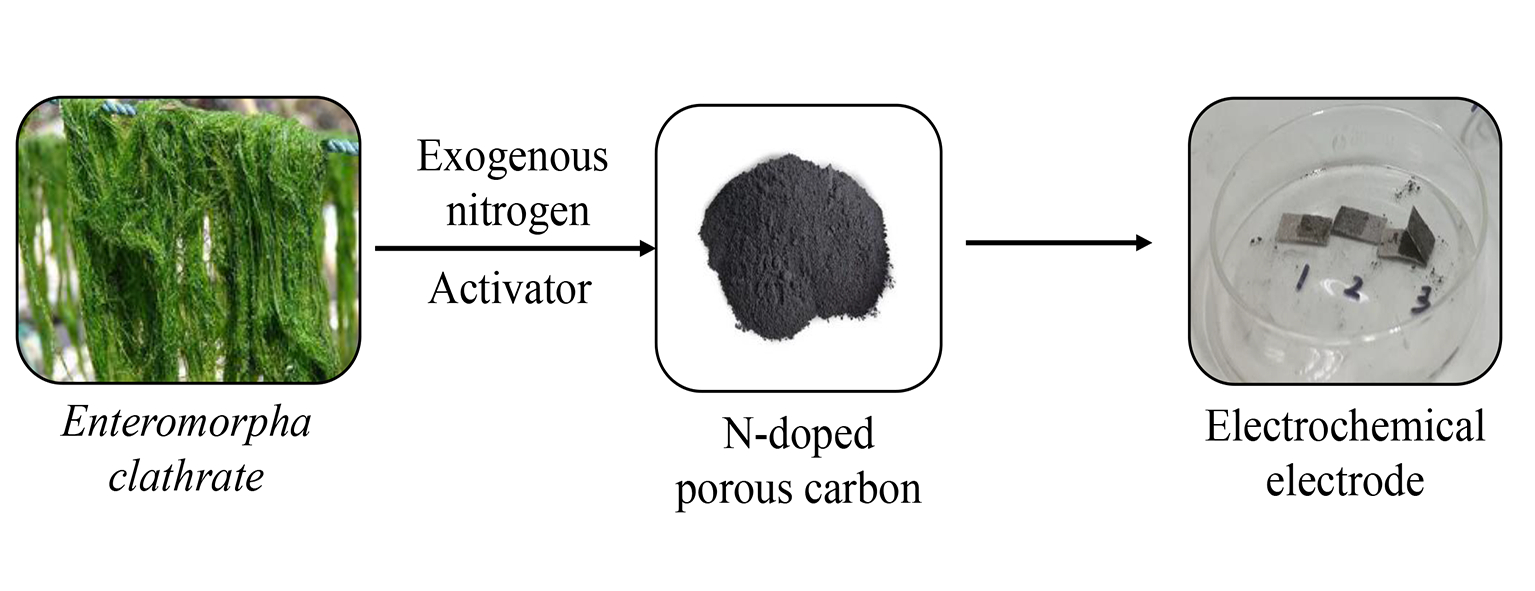 Open Access
Open Access
ARTICLE
Study on Preparation of Nitrogen-Doped Hierarchically Porous and High-Performance Carbon Materials from Seaweed Biomass
1 School of Energy and Power Engineering, Jiangsu University, Zhenjiang, China
2 Takoradi Technical University, Takoradi, Ghana
* Corresponding Authors: Yamin Hu. Email: ; Shuang Wang. Email:
Journal of Renewable Materials 2022, 10(2), 541-560. https://doi.org/10.32604/jrm.2022.017911
Received 16 June 2021; Accepted 04 August 2021; Issue published 30 August 2021
Abstract
Use Enteromorpha clathrate as a carbon and nitrogen precursor could obtain the N-doped porous carbon materials by two-step pyrolysis. In this paper, the exogenous nitrogen (urea, melamine) and activating agents (KOH, ZnCl2) were employed for the production of higher-performance carbon materials from seaweed biomass. SEM, BET, FTIR, XRD, XPS, Raman and ultimate analyses were carried out to investigate the morpho-structural and elemental peculiarities of the carbonaceous materials. Moreover, cyclic voltammetry (CV) , galvanostatic charge-discharge (GCD) and cyclic charge-discharge tests were carried out to examine the electrochemical properties of the samples. The results showed that electrochemical performance of the carbonaceous materials improved by adding the appropriate nitrogen sources. This improvement was observed under either condition, when the nitrogen source and activating agent were melamine and ZnCl2 or urea and KOH, respectively. Specifically, under the condition with KOH as the activator, the nitrogen content of carbon material without exogenous nitrogen was initially 1.46%. After the addition of urea or melamine, the nitrogen content increased to 4.86% and 6.18%, respectively. Under the condition with ZnCl2 as the activator, and without exogenous nitrogen, the nitrogen content of carbon materials was initially 3.75%. However, after adding urea or melamine, the nitrogen content increased to 12.11% and 14.76%, respectively. The carbonaceous materials (prepared from urea/KOH and melamine/ZnCl2) showed excellent gravimetric capacitances of 172 and 151.5 F/g at 1A/g. Moreover, at a current density of 5 A/g, their specific capacitance retention rate reached 78.3% and 82.6% respectively after 1000 cycles.Graphic Abstract

Keywords
Cite This Article
Citations
 Copyright © 2022 The Author(s). Published by Tech Science Press.
Copyright © 2022 The Author(s). Published by Tech Science Press.This work is licensed under a Creative Commons Attribution 4.0 International License , which permits unrestricted use, distribution, and reproduction in any medium, provided the original work is properly cited.


 Submit a Paper
Submit a Paper Propose a Special lssue
Propose a Special lssue View Full Text
View Full Text Download PDF
Download PDF

 Downloads
Downloads
 Citation Tools
Citation Tools